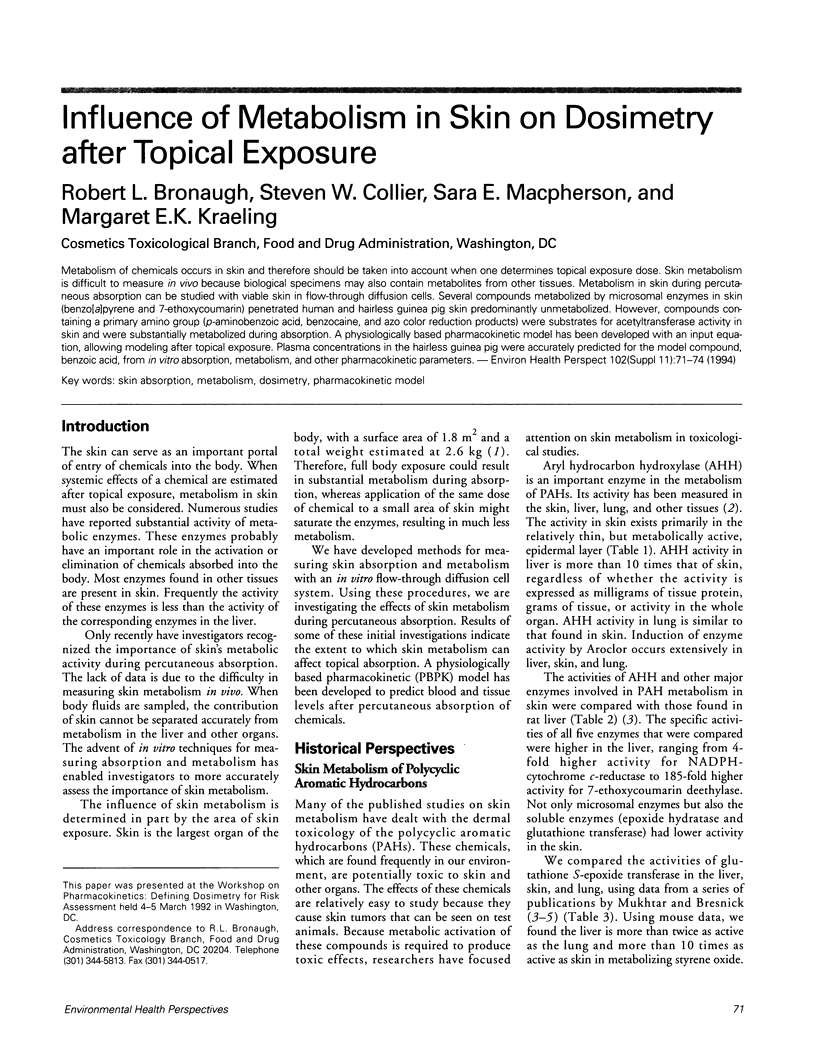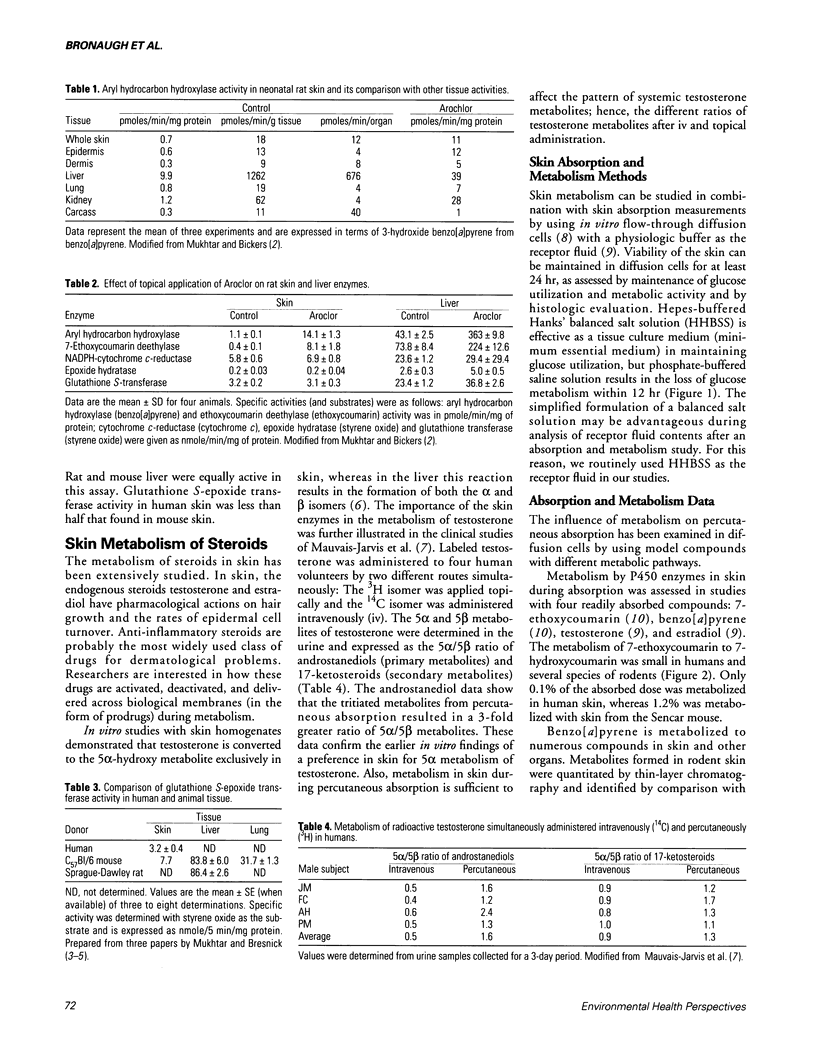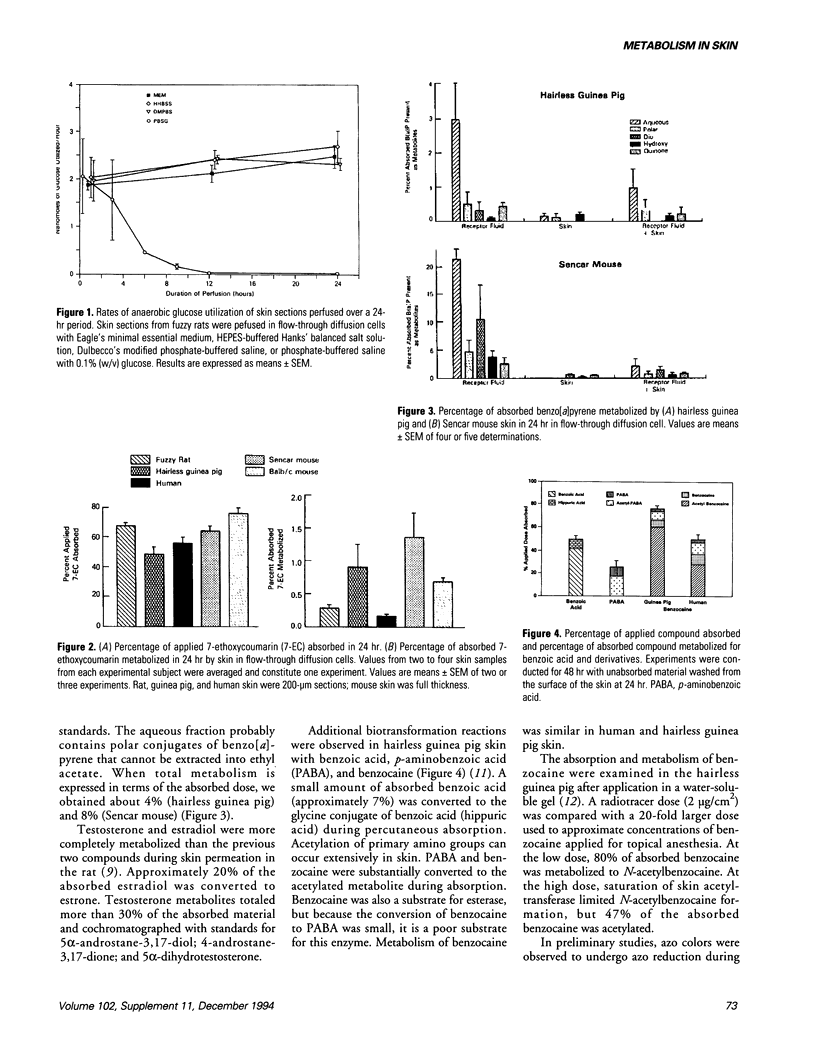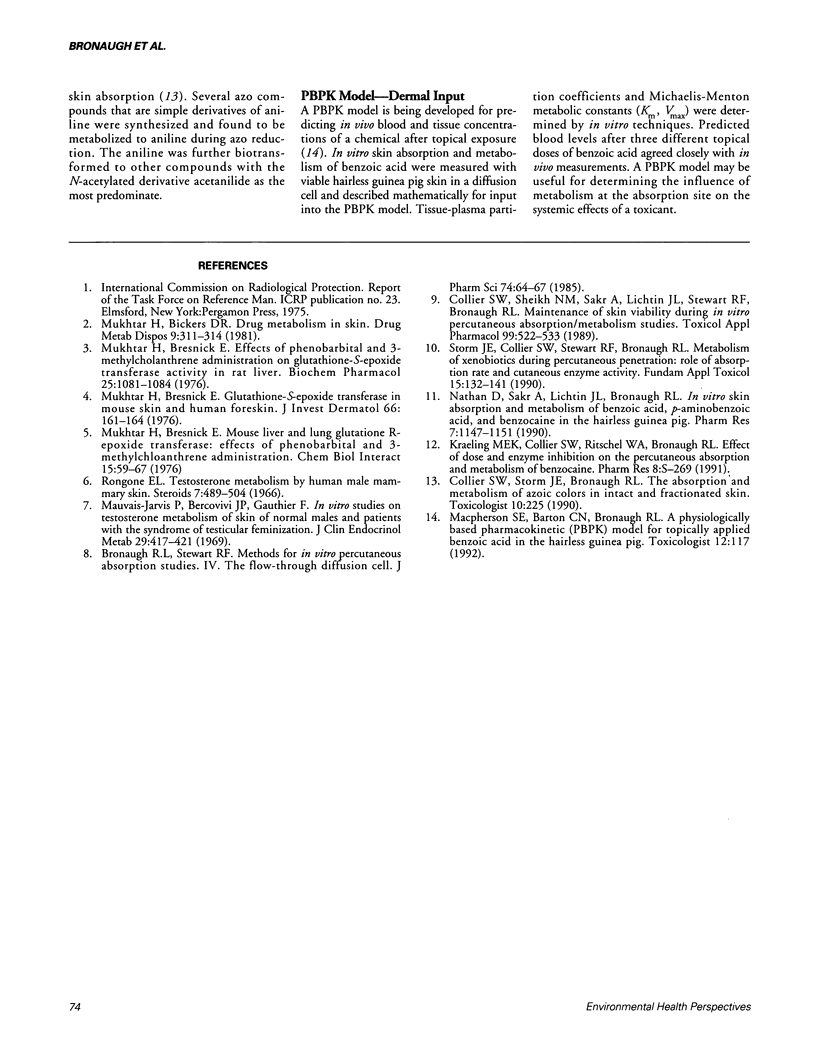Abstract
Metabolism of chemicals occurs in skin and therefore should be taken into account when one determines topical exposure dose. Skin metabolism is difficult to measure in vivo because biological specimens may also contain metabolites from other tissues. Metabolism in skin during percutaneous absorption can be studied with viable skin in flow-through diffusion cells. Several compounds metabolized by microsomal enzymes in skin (benzo[a]pyrene and 7-ethoxycoumarin) penetrated human and hairless guinea pig skin predominantly unmetabolized. However, compounds containing a primary amino group (p-aminobenzoic acid, benzocaine, and azo color reduction products) were substrates for acetyltransferase activity in skin and were substantially metabolized during absorption. A physiologically based pharmacokinetic model has been developed with an input equation, allowing modeling after topical exposure. Plasma concentrations in the hairless guinea pig were accurately predicted for the model compound, benzoic acid, from in vitro absorption, metabolism, and other pharmacokinetic parameters.
Full text
PDF



Selected References
These references are in PubMed. This may not be the complete list of references from this article.
- Bronaugh R. L., Stewart R. F. Methods for in vitro percutaneous absorption studies IV: The flow-through diffusion cell. J Pharm Sci. 1985 Jan;74(1):64–67. doi: 10.1002/jps.2600740117. [DOI] [PubMed] [Google Scholar]
- Collier S. W., Sheikh N. M., Sakr A., Lichtin J. L., Stewart R. F., Bronaugh R. L. Maintenance of skin viability during in vitro percutaneous absorption/metabolism studies. Toxicol Appl Pharmacol. 1989 Jul;99(3):522–533. doi: 10.1016/0041-008x(89)90159-2. [DOI] [PubMed] [Google Scholar]
- Mauvais-Jarvis P., Bercovici J. P., Gauthier F. In vivo studies on testosterone metabolism by skin of normal males and patients with the syndrome of testicular feminization. J Clin Endocrinol Metab. 1969 Mar;29(3):417–421. doi: 10.1210/jcem-29-3-417. [DOI] [PubMed] [Google Scholar]
- Mukhtar H., Bickers D. R. Drug metabolism in skin. Comparative activity of the mixed-function oxidases, epoxide hydratase, and glutathione S-transferase in liver and skin of the neonatal rat. Drug Metab Dispos. 1981 Jul-Aug;9(4):311–314. [PubMed] [Google Scholar]
- Mukhtar H., Bresnick E. Effects of phenobarbital and 3-methylcholanthrene administration on glutathione-S-epoxide transferase activity in rat liver. Biochem Pharmacol. 1976 May 1;25(9):1081–1084. doi: 10.1016/0006-2952(76)90501-3. [DOI] [PubMed] [Google Scholar]
- Mukhtar H., Bresnick E. Glutathione-S-epoxide transferase in mouse skin and human foreskin. J Invest Dermatol. 1976 Mar;66(3):161–164. doi: 10.1111/1523-1747.ep12481903. [DOI] [PubMed] [Google Scholar]
- Mukhtar H., Bresnick E. Mouse liver and lung glutathione s-epoxide transferase: effects of phenobarbital and 3-methylcholanthrene administration. Chem Biol Interact. 1976 Sep;15(1):59–67. doi: 10.1016/0009-2797(76)90128-9. [DOI] [PubMed] [Google Scholar]
- Nathan D., Sakr A., Lichtin J. L., Bronaugh R. L. In vitro skin absorption and metabolism of benzoic acid, p-aminobenzoic acid, and benzocaine in the hairless guinea pig. Pharm Res. 1990 Nov;7(11):1147–1151. doi: 10.1023/a:1015980209159. [DOI] [PubMed] [Google Scholar]
- Rongone E. L. Testosterone metabolism by human male mammary skin. I. Steroids. 1966 Jun;7(6):489–504. doi: 10.1016/0039-128x(66)90139-5. [DOI] [PubMed] [Google Scholar]
- Storm J. E., Collier S. W., Stewart R. F., Bronaugh R. L. Metabolism of xenobiotics during percutaneous penetration: role of absorption rate and cutaneous enzyme activity. Fundam Appl Toxicol. 1990 Jul;15(1):132–141. doi: 10.1016/0272-0590(90)90170-o. [DOI] [PubMed] [Google Scholar]


